“The sailing ship, the distant view, the lonely walks in autumn, the relative silence, it is paradise.”
Albert Einstein, 1929
ALBERT EINSTEIN IN CAPUTH, 1929-1932
CAPUTH
The municipality of Caputh is about six kilometres south of Potsdam, today’s state capital of Brandenburg. This quiet and dreamy place has become famous all over the world through Albert Einstein who spent most of the year in his summer house in Caputh during the years 1929 to 1932. It lies idyllically at two Havel lakes, the “Templiner See” and the “Schwielowsee” whereas the latter is one of the most beautiful lakes in the Mark Brandenburg. In his “hikes through the Mark Brandenburg” the German poet Theodor Fontane (1819-1898) wrote with impassioned words: “The Schwielow is wide, cosy, sunny and has the comfortableness of all widely laid-out natures.”
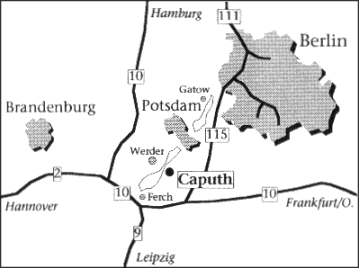
At the time Einstein lived there Caputh had about 3000 inhabitants who earned a living mainly with small-scale companies such as fruit growing, fishing and trade.
Einstein liked living in Caputh very much. It was the quiet, the lakes and the magnificent forests which encouraged him to long and lonely hikes independent from the time of year.
Until now this unique Havel landscape hasn’t changed much. The scenic variety around Caputh and the Havel lakes still invite to hikes, relaxation and changes.
THE PRESENT
“The little house in Caputh is a flop, but a very nice one (…)”, wrote Albert Einstein on 18.11.1929 to his sister Maja, shortly after he had moved to his new summer house in Caputh.
To his 50th birthday on March 14 in 1929 Einstein received congratulations and presents from all over the world. To escape the hustle and bustle he spent his birthday not in Berlin but “fled” with his family into the villa of his doctor and friend Janos Plesch to Gatow at the “Wannsee”. Berlin also offered the world-famous physicist and son of the city its congratulations. The mayor of Berlin, Gustav Böss, emphasized in his congratulation telegram that the city of Berlin would be proud “to count this German to its citizens whose fame not only at this time fills the world but whose name will be counted throughout the millenniums to the immortal ones.” But despite all these beautiful words they had no present for Einstein. A scandal!
At the suggestion of the mayor the birthday present should be a house at the lake. Some time before Einstein’s birthday the municipal authorities of Berlin had decided for this generous present and in the following time Einstein and his family were suggested several projects. In case of the first house that the city had chosen it would have been necessary to throw out the current tenant but Einstein didn’t want this. The following project proposals by the city were equally problematic because it wanted to give away houses with which it couldn’t do as it wanted. After it had finally found out that there was no suitable house they wanted to give Einstein a property with his approval on which they wanted to build a house according to his ideas. But this plan also went astray. As time went by, the present continuously grew smaller. The city now only wanted to give a property as a present which Einstein should select on his own and on which he then could build a house on his own costs.
In the meantime the press had heard of the “present of the city”. Thus the whole action became public and became a real scandal.
Elsa Einstein finally found an appropriate property in Caputh in the Waldstrasse 7, which the mayor also gave his approval to. But after also political quarrels appeared within the city parliament on occasion of the present Einstein finally refused. He told the mayor about his decision in a letter who still in vain tried to persuade him to cancel his choice.
After that Einstein bought the property in Caputh himself and let his house be built on his own costs. Although the “unsuccessful present” of the city spent all of Einstein’s savings he never regretted this step.
THE ARCHITECT
When the first articles about the expected present from Berlin to Einstein appeared in the Berlin newspapers in Niesky, Lower Silesia, the young architect Konrad Wachsmann went to Berlin to build a house for the great physicist Albert Einstein.
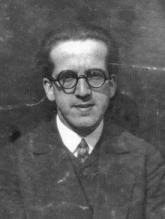
Konrad Wachsmann was born on May 16 in 1901 to Jewish parents in Frankfurt (Oder). After his apprenticeship as a carpenter he studied from 1920 to 1924 in Berlin at the Arts and Crafts School and in Dresden at the Academy of Arts. After that he was apprentice to the master of the German architect Hans Poelzig in Berlin and Potsdam, who had been one of the main representatives of the expressionist architecture in Germany. Since 1926 Wachsmann had been chief architect of the wood building company Christoph & Unmack AG in Niesky, Lower Silesia.
In spring 1929 he heard of the birthday present from Berlin to Einstein and that Einstein in this connection was interested in a timber house. Thus he went to Berlin in the Haberlandstrasse 5 and offered Einstein to build the house for him. After several talks with Einstein and various building proposals Wachsmann received the order to build the house. About the same time he quit at the company Christoph & Unmack and afterwards worked as a freelance architect. Einstein and Wachsmann were quite good friends from the beginning and Wachsmann later was a welcomed guest at Einstein’s house in Caputh.
In the year 1932 Wachsmann was awarded the Rome Prize of the Prussian Academy of Arts which entitled him to work artistically and for free at the German Academy in Rome in the Villa Massimo. In the year 1941 Einstein – who had already lived for years in the United States – helped Wachsmann to emigrate to the United States.
In the 1940ies Wachsmann worked together with the architect Walter Gropius and the two of them developed the General-Panel-System. With this system Wachsmann became world-famous, too.
In the years 1978/1979 on the occasion of the 100th birthday of Albert Einstein he helped with the restoration of Einstein’s former summer house in Caputh. In November 1980 Konrad Wachsmann died at the age of 79 in Los Angeles.
THE REAL ESTATE
The attention of Elsa Einstein was brought to the property in Caputh through her friend Elsbeth Stern in April 1929. It belonged to the Jewish government architect Adolf Stern and his wife Elsbeth and was near her house. As the families knew each other and Einstein liked the property they soon reached an agreement. Although not ideal to build a house on it, the architect Konrad Wachsmann approved it.
The property on which stood beautiful old pine trees lay on a hill directly at the forest and from there one had a magnificent view both to the village and to the Havel lakes. Another advantage was that a mooring for Einstein’s “thick sailing ship” that well-off friends gave him for his 50th birthday was only minutes away from the property.
But to get a better site for the house Einstein also bought a small strip of land that belonged to Prussia. It is remarkable that not Einstein but his two stepdaughters Ilse and Margot had their name entered into the land register.
After Einstein had signed the building plans he applied for the building permission on May 12 in 1929 and it was given on June 21. Afterwards the building phase of Einstein’s summer house in Caputh, Waldstrasse 7 began. During the building phase the Einstein’s rented a flat in Caputh, in the Potsdamer Strasse 35. The building of the house went that fast that Einstein was able to move in with his family and the housekeeper Herta Schiefelbein already in September 1929.
THE HOUSE
Despite the protests of his wife who would have preferred to have a house built of stone, Einstein let his house be built of timber. The house had a cellar and was built in a combination of locally known half-timbered and board and slab building style. Using this technique the scaffolding consists of beams that are connected with each other. Both the outer and inner walls and the ceilings are built of timber slabs or rather boards.
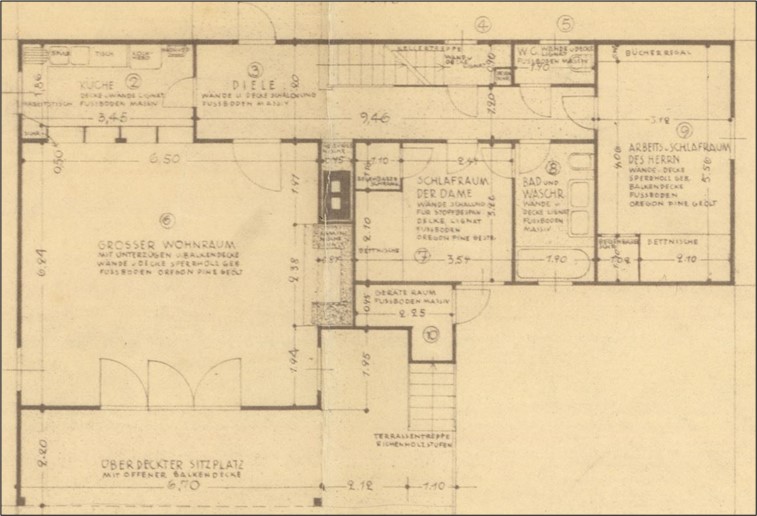
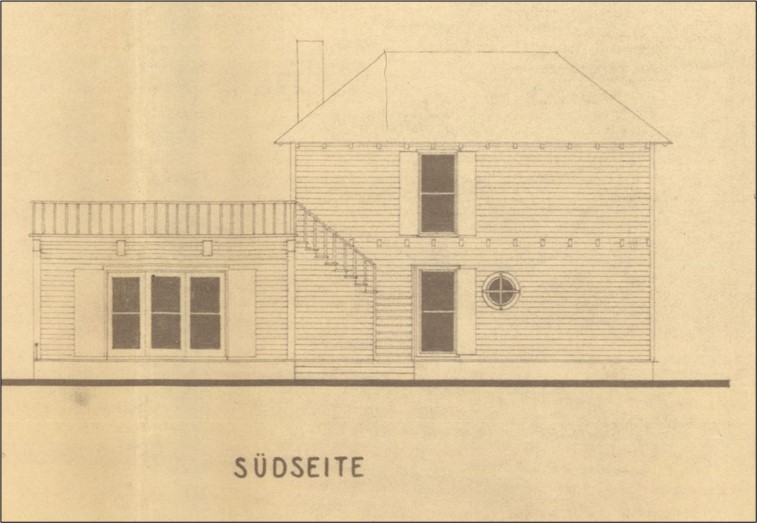
The building plans shown here do not include the “French window with shutters” in Einstein’s study.
The house was built mainly of Oregon pine and Galician fir. For the isolation between the inner and outer walls different materials have been used, for example a layer of turf and a few centimetres wide space of air. To maintain the look of a log cabin the façade consisted of boards running horizontally with a few visible beam ends. It was lit up by big French windows with white window shutters. The roof consisted of tiles. Before the final construction in Caputh the house was built on a trial basis at the wood building company Christoph & Unmack AG in Niesky.
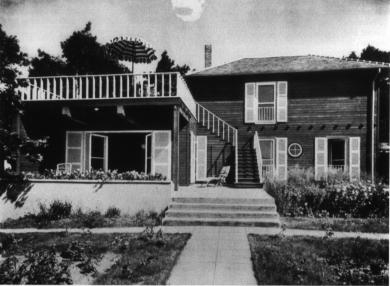
Einstein’s summer house wasn’t very spacious. Over the entrance on the north side which was on the ground floor, the hall could be entered. Here were the big living room with a chimney and a direct entrance to the covered terrace at the south side of the house. Then there was Elsa’s room and Einstein’s working and sleeping room, the kitchen, the hall, the bathroom and the toilette. Over a stair the cellar could be reached. There stood the coke oven of the central heating. When needed it was fired by a man from Caputh and the housekeeper only had to take care of the oven not going out any more. From the ground floor a stair led to the upper rooms. There were the room of Einstein’s stepdaughter Margot, a guest room – here lived Einstein’s second stepdaughter Ilse and her husband Rudolf Kayser very frequently – a room for the housekeeper and a toilette. The roof terrace could be reached over the upper rooms or a stair on the outside. For the hot days of the year Einstein also had a shadowy cellar terrace.
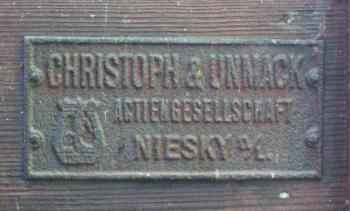
To save money the house had been partly equipped with furniture dispensable in the city flat in Berlin. In almost all rooms there were partly walk able and with washing facilities equipped built-in cupboards. In the living room – among other things – stood beside a few armchairs and a small table in the middle of the room a big, round table with chairs on which the meals were eaten. As the door to the terrace was mostly open the living room seemed with the bordering terrace like a big “garden hall”. In the kitchen there was a gas oven for the cooking, a refrigerator was also bought later.
In Einstein’s room stood a simple writing desk built according to his own ideas, with a desk lamp and a leather chair. From his working place Einstein had a magnificent view over Caputh and the Havel lakes. In the room there was also a bed which was built into a niche and a small bedside table. A book shelf above which hung a picture of Newton, was put up later and served – among other things – also as storage place for Einstein’s violin. The other rooms in the house were also only sparsely furnished. There was no telephone in the house.
From the living room terrace the garden could be reached by a few steps. This garden was originally an ornamental garden and was taken care of by a gardener. A paved way led through the garden; Einstein always used it to get to the mooring of his sailing ship.
Near his summer house there stood a garden house that Einstein bought in November 1932 but never used. Ilse Kayser had the entry in the land register.
EINSTEIN IN CAPUTH
During the time in Caputh from 1929 to 1932 Einstein’s popularity was still unbroken. He received invitations from all over the world to hold guest lectures at the most different universities or to receive honours or awards. During these journeys he increasingly answered questions which had nothing to do directly with his working area, the physics, for example also questions of politics. Apart from his work at different institutes in Berlin and his many journeys Caputh for him was “paradise” where he secludedly could pursue his – physical – thoughts. But this was even there not always possible as he was very frequently pestered by people who wanted something from him.
If you take a closer look at the life of Albert Einstein especially at the time in Caputh you get the impression that he spent good years in Caputh, perhaps beside the years in Bern the best of his life.
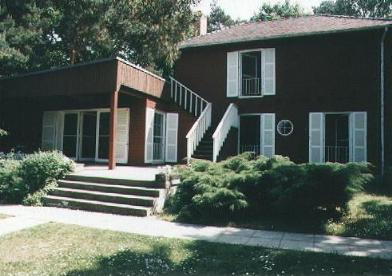
Einstein and his family lived each year between spring and late autumn in their summer house in Caputh. The rest of the year they spent in their city flat in Berlin in the Haberlandstrasse 5. Apart from the family members the housekeeper Herta Schiefelbein lived also together with them in this house. Einstein’s secretary Helen Dukas who later became one of his estate administrators and Einstein’s “calculator” Dr. Walther Mayer were very frequently in Caputh, too. She, to do his writing incurred and he to support him in questions concerning mathematics.
Einstein loved Caputh he thought of moving to Caputh entirely. But as he had much to do in Berlin, for example taking part in the weekly sessions of the Prussian Academy of Sciences he soon let go off this thought. But he liked it there so much that he sometimes simply skipped a session of the Academy or any other appointment.
In Caputh Einstein lived with nature and liked it to spend his time off any trouble in a relative quiet, the whole day according to his ideas. That could look like sitting for hours at his writing desk or make early in the morning long and relaxing hikes into the bordering forests or spend time with his favourite hobby, sailing. Apart from all these hobbies Einstein often played the violin, although not frequently and at the most uncommon times. Furthermore he found it very pleasant that he could wear convenient and casual clothes in Caputh.
To ensure the needed quiet there was no telephone in Einstein’s house. If somebody wanted to reach him by phone they had to call his neighbour, the potter master Wolff, who then called out to somebody from Einstein’s family. This procedure was later changed so that Elsa Einstein provided the family of the potter master with a little trumpet, and a signal system was developed. For every family member of Einstein there was a fixed sequence of notes with which the person wanted could be called to the phone. For example the note sequence “one time long and loud” meant that Einstein himself was called to the phone.
Einstein had besides the potter master Wolff and his family also contact to the citizens of Caputh. They all liked him, especially the children and he talked to many of them and was an attentive listener. Almost no citizen of the municipality of Caputh knew that he was world-famous. Sometimes Einstein had people from the municipality working in his house, for example somebody for putting the heating into service or for the work in the garden. He himself never took care of these things. This also was true for all other things in and around the house; they mostly were done by his wife Elsa.
The Einstein family had also two pets in Caputh. There was Purzel, the long-haired dachshund of the master craftsman Teichmann from the neighbourhood who spent more time at Einstein’s than at home and a stray cat called Peter. Einstein was fond of Purzel accompanying him on his walks and he time and again also played with the cat.
On request and in favour of the German League for Human Rights, in Caputh Einstein’s credo came into being which he spoke onto a record.
In the summer house itself there dominated a mentally productive atmosphere, not least because Einstein welcomed many well-known guests here from all over the world through which Caputh nowadays is also known worldwide.
THE GUESTS
There is hardly any private house in which dwelled that many Nobel Prize laureates like in Einstein’s summer house in Caputh. It would take too long to have a closer look at the single guests at this time. Therefore it shall be enough to give an alphabetical list of some of the famous guests to which – among others – belonged scientists, artists, writers and politicians. The names of the Nobel Prize laureates, to which Einstein himself belonged, are written in italics.
To Einstein’s guests in Caputh belonged among others:
Max Born, Gustav Bucky, Paul Ehrenfest, Felix Ehrenhaft, Abraham Flexner, Philipp Frank, Fritz Haber, Otto Hahn, Gerhart Hauptmann, Alfred Kerr, Erich Kleiber, Käthe Kollwitz, Max von Laue, Heinrich Mann, Walther Nernst, Franz Oppenheimer, Max Planck, Ruggiero Ricci, Erwin Schrödinger, Anna Seghers, Arnold Sommerfeld, Leo Szilard, Rabindranath Tagore, Chaim Weizmann, Eugene P. Wigner, Arnold Zweig.
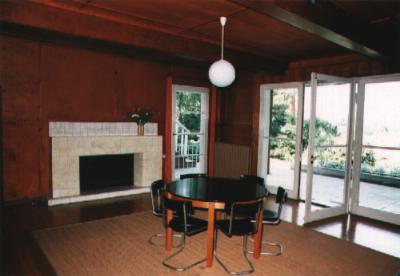
Among the guests were also some artists who portrayed Einstein in his summer house. These were among others: Elias Mandel Grossman, Henrik Lund, Max Liebermann and Hermann Struck. When visiting Caputh in August 1931, Struck painted the view from Einstein‘s house over the Schwielowsee [Lake Schwielow] into the guest book.
One of the visitors was the American Abraham Flexner. He had conversations with Einstein in Caputh and won him for the “Institute for Advanced Study” that was still to be founded in Princeton, USA, where Einstein lived and worked from 1933 until his death in April 1955.
To the less famous guests who were there also in great numbers belonged also Einstein’s sister Maja. She often was out in Caputh and when there was an opportunity brother and sister did walks in the beautiful landscape.
In his summer house Einstein had a guestbook in which the guests should write their name. According to the wish of Einstein the entry had only to be put into verses. An exception to this rule made Einstein with the Indian writer Tagore. The first and also the last entry in this book are from the physicist Max von Laue. The original guest book is nowadays to be seen in the Leo Baeck Institute in New York.
9 Cover – Einstein’s guestbook in Caputh
“GÄSTEBVCH VOM HAVSE EINSTEIN”
Illustration Credits:
Courtesy of the Leo Baeck Institute, New York
AR136 Albert Einstein Collection
Albert Einstein Caputh House Guestbook 1929-1932 (ROS12)
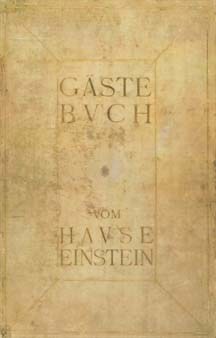
Besides the conversations which he led with his guests in his summer house he often did walks with them. It was a special honour when Einstein invited his guests to a sailing trip on the Havel lakes. This honour was given – among others – to Max von Laue who got on well with Einstein not only “scientifically” but also in private.
SAILING
“In sailing, which he did with passion, he showed no sportive ambitions” said Max von Laue about Einstein’s favourite hobby.
Einstein, who already sailed in Switzerland for example on the Zurichsee, found in Caputh ideal prerequisites. The mooring of his small sailing ship was only 10 minutes away from his house by foot, at the “Templiner See” next to the boat house “Schumann”. Well-off friends had given Einstein the small sailing ship as a present for his 50th birthday. Though it bore the name “Tümmler” Einstein called it lovingly his “thick sailing ship”.
The small sailing ship was designed by the ship building engineer Adolf Harms and built as a unique specimen in the shipyard of Berkholz & Gärsch in Friedrichshagen. It was required that the ship was simple to operate without any effort. According to Einstein’s wishes it was equipped with a auxiliary motor which one couldn’t detect from the outside and had a length of 7 metres and a width of 2,35 metres. The draught was 0,33 m or rather the draught with centre 1,25 m. The area of the sail was 20 square metres. The ship had two places to sleep. The interior, done in mahogany, was quite luxurious.
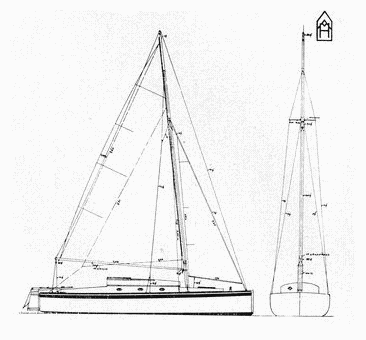
Einstein loved his “thick sailing ship” and he spent a lot of time with his ship on the bordering Havel lakes. He, who had been a good sailor, preferred sailing alone and though he couldn’t swim he strictly refused it to put on a life-jacket. This led to his family worrying ever more when he was out with his ship. Often he took also guests out to a sailing trip.
On his sailing ship Einstein found the quiet and relaxation he needed to be able to think undisturbed. As he often thought about his physical theories on the ship there was always paper and pencil on board for his notes.
PHYSICS
During Einstein’s time in Berlin (1914-1932) he had been member of the Prussian Academy of Sciences and professor at the Friedrich-Wilhelm-Universität without teaching responsibilities. Though he was allowed to hold lectures he didn’t often do it. Besides he was head of the newly founded Kaiser-Wilhelm-Institute of Physics that began to work on October 1 in 1917. In the years from 1916 to 1918 Einstein was successor to Max Planck as president of the “German Physical Society”.
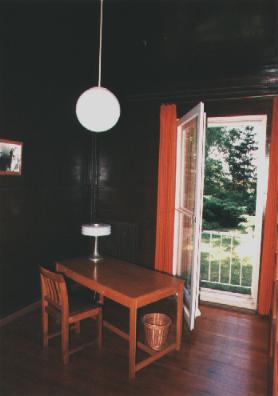
In the area of theoretical physics Einstein “slaved himself away” during the time in Caputh – among other things – with the unified field theory and with quantum mechanics.
In the unified field theory he was looking for an enhancement of his gravity theory, the general theory of relativity, to describe the gravitational field and the electromagnetic field together. On this enhancement whose basic idea he had already described in1923 in his Nobel speech in Göteborg he worked until the end of his life – but in vain.
The new theory of the microcosm, the quantum mechanics, has never been accepted by Einstein as an adequate theory, as it contained coincidences. For Einstein the term “coincidence” was unthinkable in physics and he described it as “a weakness of the theory”. Therefore he consequently criticised it though it was physically sound and constructive. In October 1930 the 6th Solvay Congress took place in Brussels. At the Solvay Congresses which were financed by the Belgian industrial magnate Ernest Solvay a small circle of internationally leading physicists came together to talk about modern physical theories. In this 6th Congress, in which Einstein took part for the last time, again there were lively quarrels between Einstein and the Danish physicist Niels Bohr, one of the pioneers of nuclear physics, about quantum mechanics.
Apart from the two mentioned working areas Einstein was busy with the most different physical problems. His numerous scientific publications from this time bear witness to this.
Apart from the journeys to receive honours Einstein did a lot of travelling to hold lectures about his theories. In the years from 1930 to 1932 he spent every winter in the Unites States to hold guest lectures at the California Institute of Technology (CalTech) in Pasadena, California and at Mount Wilson Astronomical Observatory together with the famous astronomer Edwin Hubble.
VARIOUS THINGS
Several times Einstein went to the Telegrafenberg in Potsdam to inform himself on the current state of research on gravitational red shift, predicted by the general theory of relativity, which was conducted there at the Einstein Tower. During the years 1920-1924 the Einstein Tower had been built according to the proposal of the astronomer E. F. Freundlich – on the grounds of the Astrophysical Observatory. The architect was Erich Mendelsohn. The building was financed by the foundation “Einstein-donor”. The Einstein Tower had been partly destroyed in World War II but was reconstructed later and it is still used today by science for research on the sun.
Parallel to physics Einstein was busy in the years from 1929 to 1932 with other, more general topics. Besides his already mentioned credo also at this point his impressing speech due to the opening of the 7th German radio and television exhibition & audio exhibition in Berlin at August 22 in 1930 is to be mentioned.
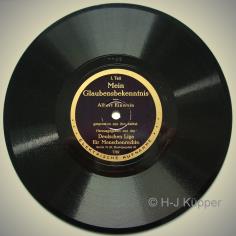
(“Mein Glaubensbekenntnis”)
He wrote widely read commemorative essays for example in November 1930 on the occasion of the 300th anniversary of the death of Johannes Kepler and obituaries like for example to the late German foreign secretary Gustav Stresemann who died on October 3 in 1929.
As Einstein supported the cause of the Zionists he took part in a Zionist congress in August 1929 in Zurich. Not only due to the political situation in Europe and especially in Germany he had been fighting ever more intensely for pacifism since 1930. He wrote and signed numerous appeals and petitions.
In summer 1932 he began writing with the founder of the psychoanalysis, Sigmund Freud. These letters contained an exchange of ideas about the causes of the war and its prevention and were published in 1933 in a brochure bearing the title “Why War?”
Apart from that Einstein took part in many political actions. In 1932 he tried together with his friend & colleague, the French physicist Paul Langevin, to organise other scientists & war opponents against the growing militarism and fascism. Together with Heinrich Mann, Ernst Toller, Arnold Zweig, Käthe Kollwitz and others he demanded in the same year the formation of a unified front against the increasing German fascism. But the impending disaster couldn’t be stopped.
THE NATIONAL SOCIALISM
When Einstein moved to Caputh in 1929, the national socialists were in Germany with Hitler as their leader already on their way to power. What began in 1923 with the Hitler putsch in Munich and was lead on in a mass moving war now began to bear fruits. At the Reichstag elections in September 1930 the number of seats for the NSDAP had already risen to 107 and in the election in July 1932 even to 230. Thus the NSDAP was the strongest party in Germany. Hitler was announced Reich Chancellor on January 30 in 1933 by Hindenburg and so finally came to power. At this time Einstein was on a lecture journey in the United States.
After this “seize of power”, on April 1 in 1933 the leadership of the NSDAP demanded a national boycott on Jews and the hostility of the Nazis concentrated not least on Albert Einstein. Already a few days earlier, on March 20 Einstein’s summer house in Caputh was searched by the Nazis as there was supposed to be a weapon arsenal of the communist party. His city flat in Berlin in the Haberlandstrasse 5 was also searched in the middle of April. The house in which Einstein’s city flat was located was destroyed in war.
At the “public burning of Ungerman writings” on May 10 in 1933, organised by Goebbels, also Einstein’s writings were burnt. In August 1933 Einstein’s sailing ship and in 1935 his summer house and his garden house were confiscated and given to Prussia. His beloved “thick sailing ship” was sold to a private person after it had been offered for sale by the municipality of Caputh in February 1934. In the chapter THE TIME AFTER the changing history of his summer house will be looked into. In July 1933 Einstein lost the German citizenship and his fortune was seized.
His reaction to what happened in Germany was that he resigned from the Prussian Academy of Sciences on March 28 in 1933 by letter, abandoned his German citizenship and cut off all contacts with any German institution he had ever dealt with. Einstein who spent the winter months 1932/33 in the United States declared on March 10 in 1933, shortly before his return to Europe, to the public that it was impossible for him to come back to Germany. His exact words were: “As long as it is possible for me I only will stay in a country in which political freedom, tolerance and equality of all citizens are stated in the law. (…) These conditions are nowadays not fulfilled in Germany.” Einstein has, after he had left Germany in December 1932, never again set his foot on German soil.
SAYING GOODBYE
To hold guest lectures in the United States, as he had done in the two years before, Einstein and his wife left Caputh on December 6 in 1932 to go from Antwerpen to California by ship on December 10.
Einstein’s biographer, Philipp Frank, who had also become his successor to the chair for theoretical physics at the German University in Prague in 1912 reported in his Einstein biography that he is to have said to his wife when they left their summer house in Caputh on December 6: “Before you leave our villa this time have a close look at it”. “Why?” asked his wife. And Einstein answered: “You’ll never see it again”.
Einstein sensed the development in Germany but whether he really believed in never returning to Caputh or rather to Germany before his departure is doubtful. Two examples may prove this theory. Why did Einstein, even in November 1932, buy the garden house in Caputh and why did he negotiate in February 1933 from Pasadena with the Prussian Academy of Sciences about a revision for his employment?
We’ll never get an answer to these questions. But it is sure that Albert Einstein often thought about his “thick sailing ship”, his summer house and the wonderful time of the “relative quiet” in Caputh, also in Princeton where he lived and worked since 1933. Also he will often have thought about the people in Caputh who surely have waited for the friendly professor with the childish gleaming eyes and the long hair to return – but in vain.
THE TIME AFTER
After Einstein had left Germany forever his summer house went through a changing history. Since May 1933 it had been used for a Jewish children’s home by the town, then by the Hitler Youth, by the “Bund deutscher Mädchen” and later it was occupied by air force officers. In 1935 Einstein was expropriated in favour of Prussia which in 1936 sold the house to one third of the estimated value to the municipality of Caputh. In 1945 the Soviet military office had instructed the municipality to repair the house for a possible return of Einstein. But as Einstein had decided to never set a foot on German soil again, the house was given to the municipality. During the time of the GDR it had different tenants. In 1979 on the occasion of the 100th birthday of Einstein the house was reconstructed by the Institute for Preservation of Historical Monuments of the GDR with the help of Konrad Wachsmann and was classified as a historical monument. From 1979 until the opening of the Wall it served as a guest house for the Academy of Sciences.
EINSTEIN’S SUMMER HOUSE (1995)
As the reconstruction of 1979 was not done appropriately, the first preliminary inspections for a new reconstruction of the house were done by people from monument protection at the end of 1995.
Inside the house – there are no longer original objects – there is not much anymore that reminds of the big thinker. The desk in his former study was reconstructed according to information of Konrad Wachsmann who had built the original according to the wishes of Einstein. The little other furniture in the house are in no relation with Einstein. On some of the walls there are photographs that show Einstein in Caputh.
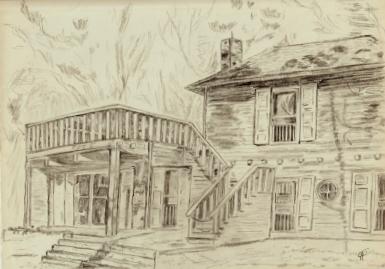
In addition to the edificial deficiencies there were also problems with the ownership structure. Until the final clarification there was a compromise between the Land Brandenburg and the local authority of Caputh about the preliminary use of the summer house. A contract from October 1994 stated that the house is available for the local authority of Caputh on weekends and public holidays. The rest of the week it may be used by the foundation Einstein Forum. The Einstein Forum was founded in 1992 and paid for by the Land Brandenburg. It wanted to turn the house into a scientific meeting place. Furthermore an Einstein archive should have its place in the house. The local authority of Caputh thought more about turning it into a kind of museum.
EINSTEIN’S SUMMER HOUSE (2005)
Address:
Einstein House
Am Waldrand 15-17
14548 Caputh / Germany
The ownership structures are clear. The house now belongs to a community of heirs. The biggest part belongs to the Hebrew University in Jerusalem. It is administrated and used by the Einstein Forum in Potsdam.
Since May 26, 2005 Albert Einstein’s summer house in Caputh is available for the public again. The extensive reconstruction measures have been made possible through the support of the German Bund and the Cornelsen Culture Foundation.
However, since it was Albert Einstein’s definite wish that his flat will not be used as a museum the house shall remain a place of cultural scientific and politic dialogue – also in the future. In addition to small workshops and cultural events it is planned to open up a room for scientific scholarship holders to allow them to do their interdisciplinary studies there.
Furthermore the house will also be open for visitors on a limited scale. A visit of the summer house in Caputh as well as the participation in guided tours is only possible with advanced reservation.
Information:
EINSTEIN FORUM
Am neuen Markt 7
14467 Potsdam / Germany
TEL.: +49 331 – 271 78 0
Press-photos Einstein House, Caputh
(c) Hans Bach, Potsdam
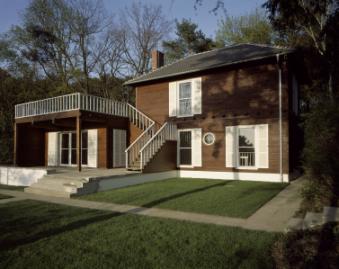
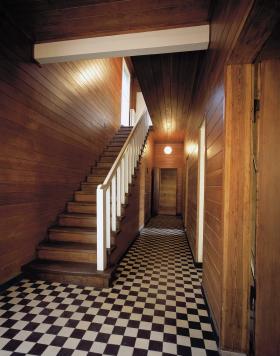
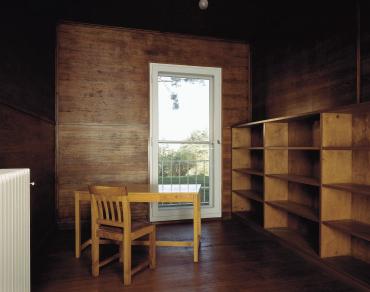
If you have the possibility to stay in Einstein’s former summer house, i.e. on the terrace or in the neighbouring garden you believe to still feel some of the atmosphere of Albert Einstein in Caputh.
Note:
Apart from the summer house in Caputh there are today two more houses preserved in which Albert Einstein has lived and worked.
The one is his former flat in Bern, Kramgasse 49. There he lived from October 1903 to May 1905.
The other one is in Princeton, New Jersey (USA) where Einstein lived in his house in Mercer Street 112 from August 1935 until his death. However, according to the wish of Albert Einstein who insisted on it not being turned into a museum after his death, this house is no longer open the public.
12/25
Illustrations Credits:
Archives of the author: 1, 3, 4, 6, 12
Stiftung Archive der Akademie der Künste, Berlin, Konrad-Wachsmann-Archive, Signature: KWA-20-4: 2
Stiftung Archive der Akademie der Künste, Berlin, Konrad-Wachsmann-Archive, Signature: KWA-28-8/1: 5
Community of Caputh, Copyright by Hans-Josef Küpper: 7, 8, 11
Courtesy of the Leo Baeck Institute, New York,
AR136 Albert Einstein Collection, Albert Einstein Caputh House Guestbook 1929-1932 (ROS12): 9
Magazine “Die Yacht”: 10
Christine Hüttner, Potsdam: 13
Einstein Forum, Potsdam: 14, 15, 16
Bibliography:
| Philipp Frank | Einstein. Sein Leben und seine Zeit | Munich 1949 |
| Michael Grüning | Ein Haus für Albert Einstein | Berlin 1990 |
| Friedrich Herneck | Albert Einstein u. das politische Schicksal seines Sommerhauses in Caputh bei Potsdam | Leipzig 1974 |
| Friedrich Herneck | Einstein privat | Berlin 1978 |
| Abraham Pais | “Raffiniert ist der Herrgott …” | Braunschweig 1986 |


 DEUTSCH
DEUTSCH